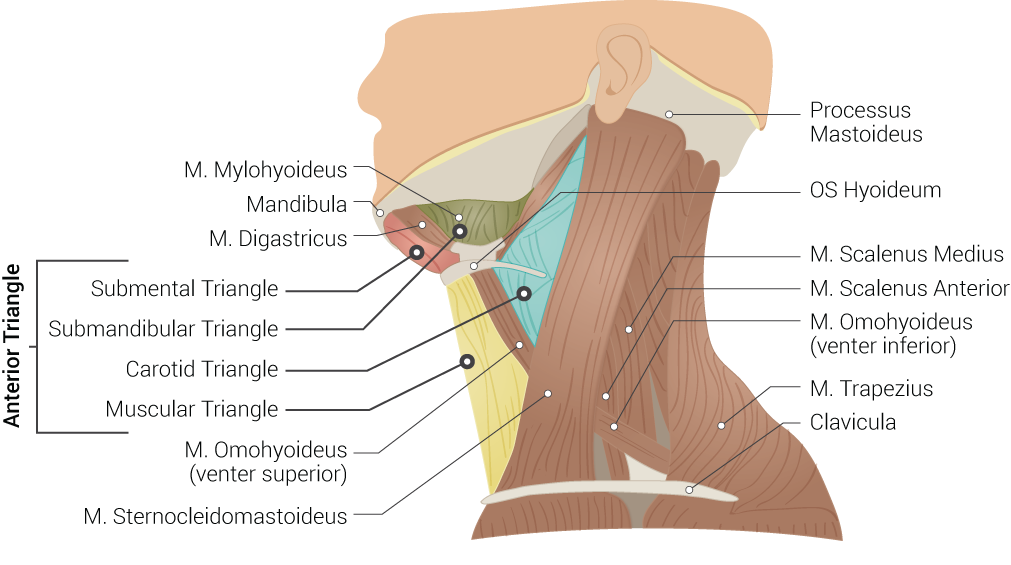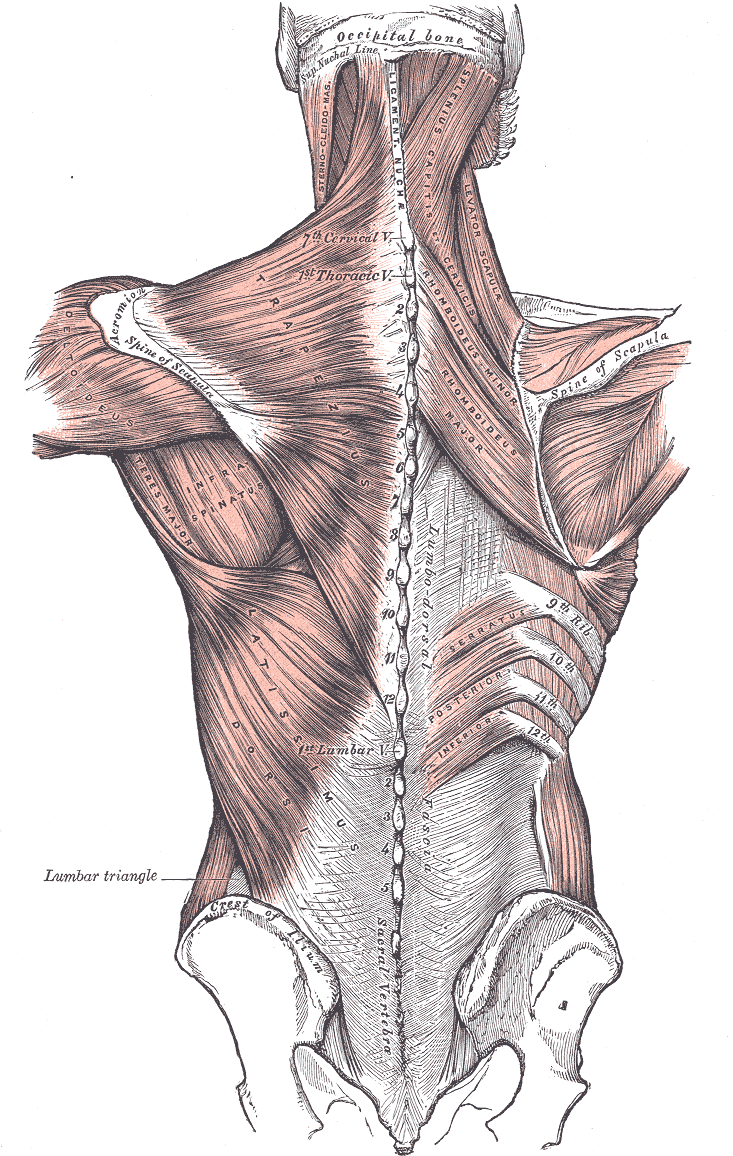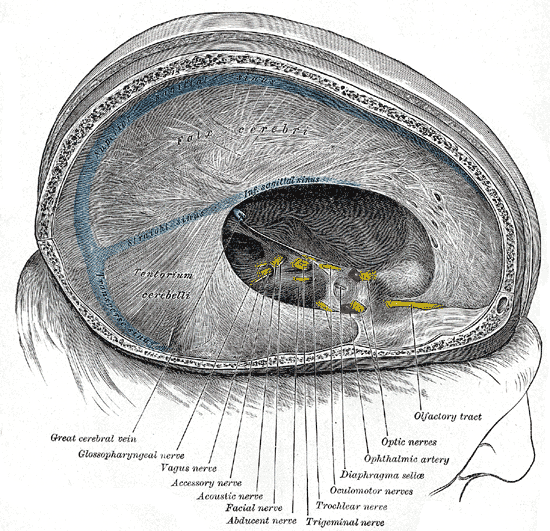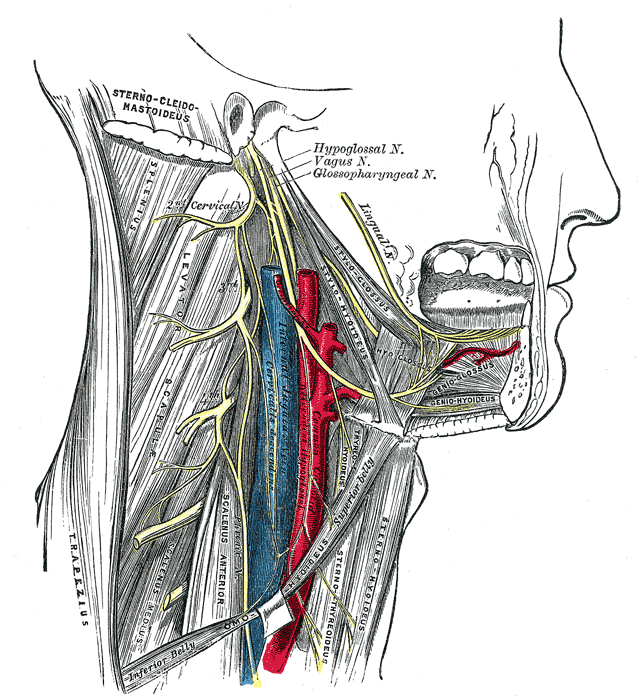[1]
Liu HF,Won HS,Chung IH,Kim IB,Han SH, Morphological characteristics of the cranial root of the accessory nerve. Clinical anatomy (New York, N.Y.). 2014 Nov
[PubMed PMID: 25131313]
[2]
Bodner G,Harpf C,Gardetto A,Kovacs P,Gruber H,Peer S,Mallhoui A, Ultrasonography of the accessory nerve: normal and pathologic findings in cadavers and patients with iatrogenic accessory nerve palsy. Journal of ultrasound in medicine : official journal of the American Institute of Ultrasound in Medicine. 2002 Oct
[PubMed PMID: 12369671]
[3]
Popovski V, Benedetti A, Popovic-Monevska D, Grcev A, Stamatoski A, Zhivadinovik J. Spinal accessory nerve preservation in modified neck dissections: surgical and functional outcomes. Acta otorhinolaryngologica Italica : organo ufficiale della Societa italiana di otorinolaringologia e chirurgia cervico-facciale. 2017 Oct:37(5):368-374. doi: 10.14639/0392-100X-844. Epub
[PubMed PMID: 29165431]
[4]
Kim DH, Cho YJ, Tiel RL, Kline DG. Surgical outcomes of 111 spinal accessory nerve injuries. Neurosurgery. 2003 Nov:53(5):1106-12; discussion 1102-3
[PubMed PMID: 14580277]
[6]
Lanišnik B, Different branching patterns of the spinal accessory nerve: impact on neck dissection technique and postoperative shoulder function. Current opinion in otolaryngology
[PubMed PMID: 28106660]
Level 3 (low-level) evidence
[7]
Kassem MW,Iwanaga J,Loukas M,Stone JJ,Smith J,Spinner RJ,Tubbs RS, Accessory neuropathy after sternotomy: Clinico-anatomical correlation supporting an inflammatory cause. Clinical anatomy (New York, N.Y.). 2018 Apr;
[PubMed PMID: 29193420]
[8]
Keleş Z,Zinnuroğlu M,Beyazova M, Impairment of upper trapezius branch of the spinal accessory nerve during bypass grafting: a stretch injury? Muscle
[PubMed PMID: 19768768]
[9]
Millett PJ,Romero A,Braun S, Spinal accessory nerve injury after rhytidectomy (face lift): a case report. Journal of shoulder and elbow surgery. 2009 Sep-Oct;
[PubMed PMID: 19328018]
Level 3 (low-level) evidence
[10]
Bodack MP,Tunkel RS,Marini SG,Nagler W, Spinal accessory nerve palsy as a cause of pain after whiplash injury: case report. Journal of pain and symptom management. 1998 May;
[PubMed PMID: 9654838]
Level 3 (low-level) evidence
[11]
Ozdemir O,Kurne A,Temuçin C,Varli K, Spontaneous unilateral accessory nerve palsy: a case report and review of the literature. Clinical rheumatology. 2007 Sep;
[PubMed PMID: 17661123]
Level 3 (low-level) evidence
[12]
Prim MP,De Diego JI,Verdaguer JM,Sastre N,Rabanal I, Neurological complications following functional neck dissection. European archives of oto-rhino-laryngology : official journal of the European Federation of Oto-Rhino-Laryngological Societies (EUFOS) : affiliated with the German Society for Oto-Rhino-Laryngology - Head and Neck Surgery. 2006 May
[PubMed PMID: 16380807]
[13]
Leipzig B,Suen JY,English JL,Barnes J,Hooper M, Functional evaluation of the spinal accessory nerve after neck dissection. American journal of surgery. 1983 Oct;
[PubMed PMID: 6625099]
[14]
Cappiello J,Piazza C,Giudice M,De Maria G,Nicolai P, Shoulder disability after different selective neck dissections (levels II-IV versus levels II-V): a comparative study. The Laryngoscope. 2005 Feb;
[PubMed PMID: 15689746]
Level 2 (mid-level) evidence
[15]
Kierner AC,Burian M,Bentzien S,Gstoettner W, Intraoperative electromyography for identification of the trapezius muscle innervation: clinical proof of a new anatomical concept. The Laryngoscope. 2002 Oct
[PubMed PMID: 12368629]
[16]
Macaluso S,Ross DC,Doherty TJ,Doherty CD,Miller TA, Spinal accessory nerve injury: A potentially missed cause of a painful, droopy shoulder. Journal of back and musculoskeletal rehabilitation. 2016 Nov 21
[PubMed PMID: 26966820]
[17]
Mayer JA, Hruby LA, Salminger S, Bodner G, Aszmann OC. Reconstruction of the spinal accessory nerve with selective fascicular nerve transfer of the upper trunk. Journal of neurosurgery. Spine. 2019 Apr 5:31(1):133-138. doi: 10.3171/2018.12.SPINE18498. Epub
[PubMed PMID: 30952116]
[18]
Chepeha DB,Taylor RJ,Chepeha JC,Teknos TN,Bradford CR,Sharma PK,Terrell JE,Wolf GT, Functional assessment using Constant's Shoulder Scale after modified radical and selective neck dissection. Head
[PubMed PMID: 12001072]
[19]
Chandawarkar RY, Cervino AL, Pennington GA. Management of iatrogenic injury to the spinal accessory nerve. Plastic and reconstructive surgery. 2003 Feb:111(2):611-7; discussion 618-9
[PubMed PMID: 12560682]
[20]
Piazza C,Cappiello J,Nicolai P, Sternoclavicular joint hypertrophy after neck dissection and upper trapezius myocutaneous flap transposition. Otolaryngology--head and neck surgery : official journal of American Academy of Otolaryngology-Head and Neck Surgery. 2002 Feb
[PubMed PMID: 11870353]
[21]
Brown H,Burns S,Kaiser CW, The spinal accessory nerve plexus, the trapezius muscle, and shoulder stabilization after radical neck cancer surgery. Annals of surgery. 1988 Nov
[PubMed PMID: 3056289]
[22]
Kim KH,Shin S,Kim DH, Optimal Trapezius Electrophysiological Recording Site. PM & R : the journal of injury, function, and rehabilitation. 2020 Jun
[PubMed PMID: 31677234]
[23]
Constant CR,Murley AH, A clinical method of functional assessment of the shoulder. Clinical orthopaedics and related research. 1987 Jan
[PubMed PMID: 3791738]
[24]
Teboul F,Bizot P,Kakkar R,Sedel L, Surgical management of trapezius palsy. The Journal of bone and joint surgery. American volume. 2004 Sep;
[PubMed PMID: 15342749]
[25]
Gordon SL, Graham WP 3rd, Black JT, Miller SH. Acessory nerve function after surgical procedures in the posterior triangle. Archives of surgery (Chicago, Ill. : 1960). 1977 Mar:112(3):264-8
[PubMed PMID: 843216]
[26]
Salerno G,Cavaliere M,Foglia A,Pellicoro DP,Mottola G,Nardone M,Galli V, The 11th nerve syndrome in functional neck dissection. The Laryngoscope. 2002 Jul
[PubMed PMID: 12169917]
[27]
Kizilay A,Kalcioglu MT,Saydam L,Ersoy Y, A new shoulder orthosis for paralysis of the trapezius muscle after radical neck dissection: a preliminary report. European archives of oto-rhino-laryngology : official journal of the European Federation of Oto-Rhino-Laryngological Societies (EUFOS) : affiliated with the German Society for Oto-Rhino-Laryngology - Head and Neck Surgery. 2006 May
[PubMed PMID: 16365773]
[28]
Akgun K,Aktas I,Uluc K, Conservative treatment for late-diagnosed spinal accessory nerve injury. American journal of physical medicine & rehabilitation. 2008 Dec
[PubMed PMID: 19033760]
[29]
McGarvey AC,Hoffman GR,Osmotherly PG,Chiarelli PE, Maximizing shoulder function after accessory nerve injury and neck dissection surgery: A multicenter randomized controlled trial. Head & neck. 2015 Jul
[PubMed PMID: 25042422]
Level 1 (high-level) evidence
[31]
Maki Y,Firrell JC,Breidenbach WC, Blood flow in mobilized nerves: results in a rabbit sciatic nerve model. Plastic and reconstructive surgery. 1997 Sep
[PubMed PMID: 9283560]
[32]
Ducic I,Maloney CT Jr,Dellon AL, Reconstruction of the spinal accessory nerve with autograft or neurotube? Two case reports. Journal of reconstructive microsurgery. 2005 Jan
[PubMed PMID: 15672316]
Level 3 (low-level) evidence
[33]
den Dunnen WF,van der Lei B,Schakenraad JM,Stokroos I,Blaauw E,Bartels H,Pennings AJ,Robinson PH, Poly(DL-lactide-epsilon-caprolactone) nerve guides perform better than autologous nerve grafts. Microsurgery. 1996;
[PubMed PMID: 9379881]
[35]
Witt RL,Rejto L, Spinal accessory nerve monitoring in selective and modified neck dissection. The Laryngoscope. 2007 May;
[PubMed PMID: 17473667]
[36]
Milenović A,Knežević P,Boras VV,Gabrić D,Rogulj AA,Virag M, [INFLUENCE OF NECK DISSECTION ON THE CORRESPONDING MOTOR AND SENSORY NERVES]. Lijecnicki vjesnik. 2015 Jul-Aug
[PubMed PMID: 26502671]
[37]
Giordano L,Sarandria D,Fabiano B,Del Carro U,Bussi M, Shoulder function after selective and superselective neck dissections: clinical and functional outcomes. Acta otorhinolaryngologica Italica : organo ufficiale della Societa italiana di otorinolaringologia e chirurgia cervico-facciale. 2012 Dec
[PubMed PMID: 23349556]
[38]
Paoloni JA,Milne C,Orchard J,Hamilton B, Non-steroidal anti-inflammatory drugs in sports medicine: guidelines for practical but sensible use. British journal of sports medicine. 2009 Oct
[PubMed PMID: 19546098]
[39]
Göransson H,Leppänen OV,Vastamäki M, Patient outcome after surgical management of the spinal accessory nerve injury: A long-term follow-up study. SAGE open medicine. 2016
[PubMed PMID: 27152195]
[40]
Ronconi G,Spagnolo AG,Ferriero G,Giovannini S,Amabile E,Maccauro G,Ferrara PE, [Case report: Iatrogenic shoulder pain syndrome following spinal accessory nerve injury during lateral cervical neck dissection for tongue cancer: the role of rehabilitation and ethical-deontological issues]. Igiene e sanita pubblica. 2017 May-Jun
[PubMed PMID: 28809870]
Level 3 (low-level) evidence
[41]
Eickmeyer SM,Walczak CK,Myers KB,Lindstrom DR,Layde P,Campbell BH, Quality of life, shoulder range of motion, and spinal accessory nerve status in 5-year survivors of head and neck cancer. PM & R : the journal of injury, function, and rehabilitation. 2014 Dec
[PubMed PMID: 24880060]
Level 2 (mid-level) evidence





